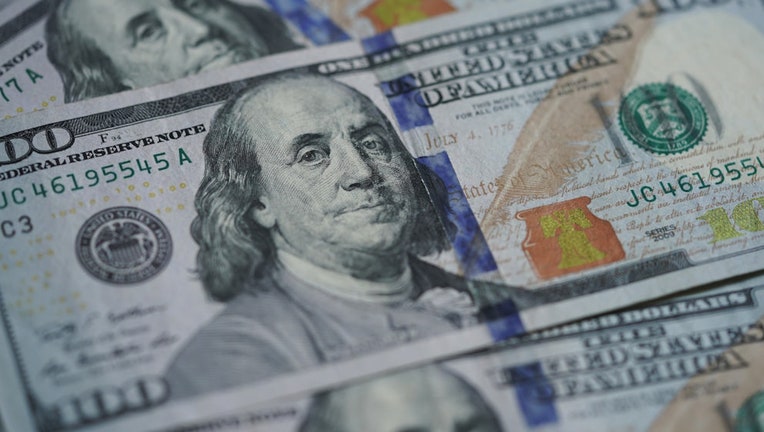Child tax credit calculator: How much money can you expect to receive?

FILE - Photo taken on March 17, 2020 shows U.S. dollar banknotes in Washington D.C., the United States. (Xinhua/Liu Jie via Getty Images)
Parents can expect to receive some extra cash beginning on July 15, when the IRS will start distributing the expanded child tax credit authorized under President Biden's coronavirus relief plan.
Under the law, known as the American Rescue Plan, low- and middle-income parents can expect to receive $3,000 for every child ages 6 to 17 and $3,600 for every child under age 6. The expanded amounts are tapered off once income hits $75,000 for individuals and $150,000 for married couples.
If families earn too much to qualify for the sweetened tax credits, they can still receive the $2,000 credit for their children if their income level is below $200,000 for individuals and $400,000 for married couples.
Families will receive a monthly payment – roughly $250 to $300 per child – instead of an annual lump sum. Half of the credit will be paid out beginning July 15. From there, the IRS will deliver the monthly payments on the 15th of each month through December 2021.
MORE NEWS: Florida man charged for trying to kidnap 11-year-old girl at school bus stop
The remaining half will be a credit toward next year's taxes. Any money left after covering taxes will be paid directly to families.
For instance, a family with a 10-year-old and a 4-year-old would be eligible for a credit of $6,600 if they earn less than $150,000. They would receive a credit of $550 per month through December, and then $3,300 when they file their taxes in 2022.
You can use this free calculator from Omni to see how much money you can expect to receive.
About 39 million households, representing about 88% of all children living in the U.S., will qualify for the payments, the IRS said.
GET THE NEWS YOU NEED TO KNOW: SIGN UP FOR FOX 35 NEWS EMAILS
Experts say the overhaul of the 24-year-old child tax credit could have significant implications for millions of families, particularly low-income households: More than 4 million children could be lifted out of poverty, according to one analysis conducted by the Center on Budget and Policy Priorities at Columbia University.
Still, the quirky design of the law sometimes means that the poorest families are bypassed and do not receive any money: Families who owed little or no income taxes were only eligible for up to $1,400 per child, rather than the $2,000 benefit provided to wealthier families, according to the Brookings Institute.
In fact, about 40% of the tax credit went to families earning more than $100,000, while just 15% went to low-income households earning less than $30,000, Brookings found.
Get updates on this story from FOXBusiness.com.

